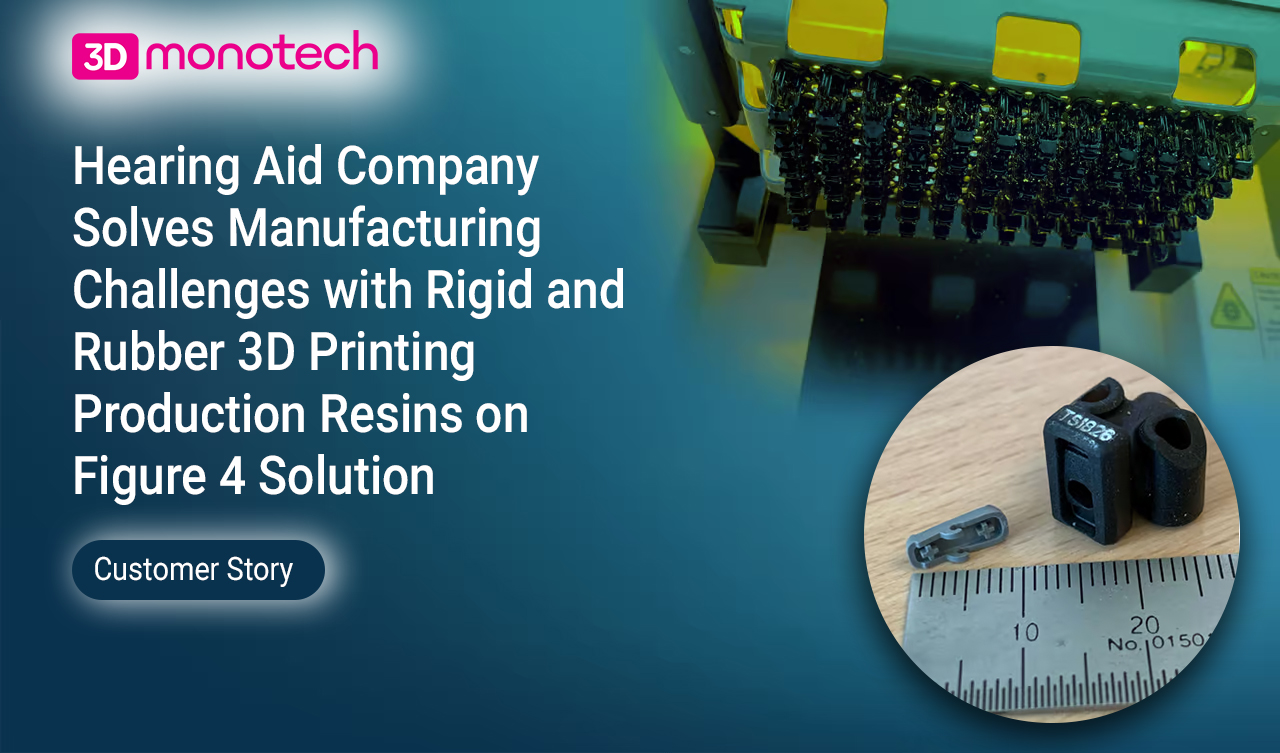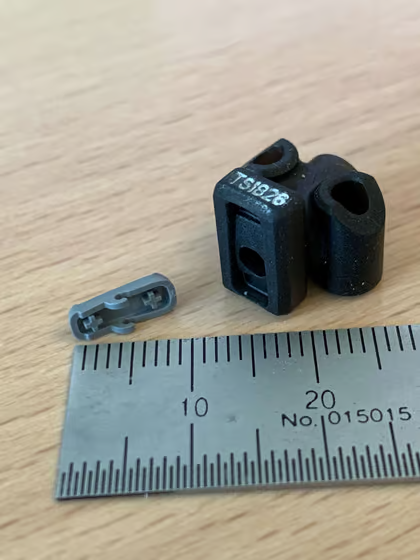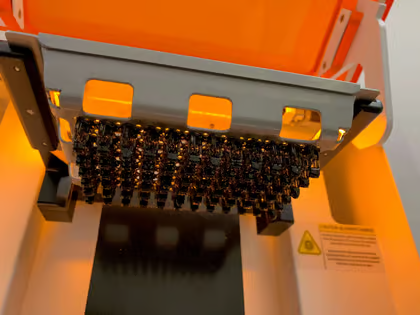
WS Audiology improves quality, performance, and delivery times for rigid and rubber production tooling with Figure 4 3D printed parts.
WS Audiology, a leading hearing aid company, has adopted 3D Systems’ Figure 4 high-speed 3D printing solution to improve the quality and function of its injection molding manufacturing processes with the 3D printing of production-grade grippers, fixtures, and prototypes at its Lynge, Denmark, site. A pioneer in 3D printing for the manufacturing of hearing aid shells, WS Audiology has expanded its use of 3D printing to solve a range of manufacturing line and product development challenges, citing the quality, performance, and material versatility of Figure 4 as key benefits of the solution.
“We saw early on that the Figure 4 had the right qualifications in terms of output quality, production performance, and [breadth] of materials.”
– Henry Frederiksen, Tool Designer, WS Audiology
The Challenge
IMPROVING QUALITY AND FUNCTION OF SMALL PARTS TRANSPORTATION
There are many different injection molded parts within WS Audiology’s Widex brand hearing aids. These parts include encasings, contacts, and blocks for electronics that are fitted in each hearing aid, some of which are as small as 8mm x 3mm. Due to their size, this category of parts requires robotic rather than manual handling, involving suction cups for larger parts, and metal grippers for small parts. However, these handling methods have shortcomings. The suction cups have difficulty properly orienting parts, which leads to loss of grip, and the metal-based grippers are prone to leaving marks on the parts in addition to having long manufacturing lead times.
The Solution
01 High Accuracy 3D Printing
There are many different injection molded parts within WS Audiology’s Widex brand hearing aids. These parts include encasings, contacts, and blocks for electronics that are fitted in each hearing aid, some of which are as small as 8mm x 3mm. Due to their size, this category of parts requires robotic rather than manual handling, involving suction cups for larger parts, and metal grippers for small parts. However, these handling methods have shortcomings. The suction cups have difficulty properly orienting parts, which leads to loss of grip, and the metal-based grippers are prone to leaving marks on the parts in addition to having long manufacturing lead times.

3D Systems’ Figure 4 solution is a projection-based additive manufacturing technology that uses a non-contact membrane to combine accuracy and amazing detail fidelity with ultra-fast print speeds.
WS Audiology experienced several major benefits of using 3D printing to manufacture hearing aid shells, including both a final product with substantially higher-quality and an eight-fold productivity increase. Following this success with the technology, the decision to extend the company’s 3D printing applications to solve its workflow transportation problems was an easy one.
3D Systems’ Figure 4 solution is a projection-based additive manufacturing technology that uses a non-contact membrane to combine accuracy and amazing detail fidelity with ultra-fast print speeds. WS Audiology uses the Figure 4® Standalone, an affordable and versatile solution that offers speed, quality, and accuracy with industrial-grade durability, service, and support, as well as quick material changeovers for enhanced application versatility.
02 Rapid Design Iteration
The task was assigned to WS Audiology’s Tooling Department. According to tool designer Henry Federiksen, taking on this project with Figure 4 gave him a lot of confidence, and the speed of the solution enabled more parts to be produced, tested, and confirmed in a shorter period of time.
03 Production Speed
A key benefit to using the Figure 4 solution is the ability to produce parts without tooling. WS Audiology is able to go directly from a digital file to a physical part, removing a significant amount of time from its typical processes. According to Frederiksen, 3D printed grippers are usually available in a day or two, leaving a lot of happy customers in the injection molding department.
“The current production volume today is about 200 grippers, 100 jigs and fixtures, and 500+ prototypes per year, so we make good use of our investment.”
– Henry Frederiksen, Tool Designer, WS Audiology
04 Production-Capable Materials
For WS Audiology’s production tooling applications, it is taking advantage of Figure 4 PRO-BLK 10 and Figure 4 RUBBER-65A BLK. The range of materials available with the Figure 4 platform makes it possible to address a broad set of applications with greater diversity in material properties, with material chemistries that have been engineered for long-term use, up to 1.5 years for outdoor parts and up to 8 years for indoor parts (per ASTM testing methods). Figure 4 PRO-BLK 10 is a production-grade rigid material, and Figure 4 RUBBER-65A is a mid-tear strength, production-grade rubber with Shore 65A hardness and a high elongation at break.

WS Audiology is able to go directly from a digital file to a physical part, removing a significant amount of time from its typical processes.
The Results
QUICK DELIVERY OF BETTER PERFORMING PARTS IMPROVES PERFORMANCE, VERSATILITY, AND DELIVERY TIME
Faster access to parts
available in 1-2 days
High production volume
hundreds of unique parts printed annually
Soft-grip handling
replaces damaging metal grips
Application versatility
including grippers, jigs, fixtures, and prototypes


